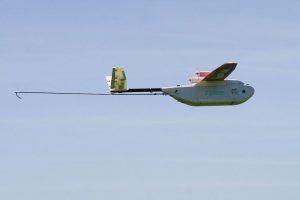Drones are used for many reasons, both business and personal. Amazon can deliver your new pair of shoes and you can get a great aerial shot of your favourite chill out spot. What if I told you there are medical drones that deliver life-saving treatments such as blood? Currently, blood is transported by many different modes of transport; car, motorbike, even Land Rovers. Drones usually don’t make that list. That is until now, anyway.
Since 2016, Rwanda has had the help of the California based start-up company, Zipline, to save lives of those in need of urgent blood transfusions and vaccines. They do this by using medical drones.
Picture: Afrika News
The Aim and Practical Uses
Zipline’s mission statement reads: “More than two billion people lack adequate access to essential medical products, like blood and vaccines. Zipline is solving this using instant on-demand delivery using small robot airplanes.” These aeroplanes are called “Zips”.
Starting their quest in Rwanda the company aims to help such a large proportion that don’t have, or can’t get, access to life-saving treatments. This could be for many reasons; namely because the medical centre is in a hard to reach location, such as beyond mountainous regions, or they can’t get the supplies quick enough due to long journey times. Delivery times in the Rwandan area typically range from a few hours to days, by which time chances of survival are minimal to nothing.
There are 21 hospitals located within a 75km radius of the central distribution centre and the company hopes to use this system in Tanzania next. There could be future usage all over the world as the company grows. Even in non-hard to reach locations it would still solve the problem of blood’s naturally short shelf life. Rather than hospitals stocking up on all types and potentially wasting crucial stock, they can simply order what they need at the time it’s needed.
How Does It Work?
There are several processes each medical drone goes through to prepare it, get the supplies to their destination and return, ready for the next flight.
- Firstly, the remote medical centre in need of supplies sends Zipline a text message with the order they need.
- These orders are sent through to the central distribution centre where supplies are packaged and prepared for flight. Product integrity is kept to the highest standard and it’s cold-chain maintained (kept at the appropriate temperature for the duration of the delivery). These distribution centres have access to sensitive and scarce items, and the items are packed within minutes.
- The medical drone then takes off, flying at over 60mph. The medical centre that ordered the supplies is sent confirmation that their delivery is on its way.
- Within 30 minutes (average fulfilment time) the drones drop the supplies over a designated area at the remote location. The package falls gently to earth on a parachute so they land safely and a text message is sent to the doctor to alert them to its arrival.
- Lastly, the drone flies back to the distribution centre, where it lands briefly for a battery change and any other updates it may need. Then it’s back to the skies with its next delivery.
The Medical Drones
[clickToTweet tweet=”Once a delivery is requested, the Zip is catapulted into the air via a launch platform. It then uses #GPS coordinates to find its location completely autonomously. #Drone #AI #TechOfTheWeek” quote=”Once a delivery is requested, the Zip is catapulted into the air via a launch platform. It then uses GPS coordinates to find its location completely autonomously.”]
Once a delivery is requested, the Zip is catapulted into the air via a launch platform. It then uses GPS coordinates to find its location completely autonomously. This is all done whilst in communication to local air traffic control stations to ensure any airlines in the area know of potential path-crossing. Though this isn’t likely to happen, as the Zips generally fly a lot closer to the ground than airliners ever would. Whilst flying over mountains or terrain that requires a higher-flying altitude is when potential issues could arise, thus being mitigated with the communications.
The medical drones, in total, make up to 500 deliveries per day, in all weather conditions, 24 hours a day, 7 days a week.
About 35,000 units of blood are delivered a year in Rwanda, with 50% going to mothers suffering postpartum haemorrhage, 30% going to children under 5 years old suffering from malaria-induced anaemia and the remaining 20% to other crucial causes.
Application in Other Countries
Currently, there are plans for the drones to be trialled in the US, but we could also see them come over to the UK. The main difference between operating in these countries, as opposed to the African states, is the difference in flight regulations. Currently, there are regulations in the US that state that drones cannot be flown over people, and also cannot be flown beyond a pilot’s line of sight. That is, without a special waiver. However, more data will be needed before such a waiver is given.
Next in the series, Wednesday 16th May 2018…
Tech of the Week #10: TESS – The Transiting Exoplanet Survey Satellite
The Transiting Exoplanet Survey Satellite, TESS, is NASA’s latest mission to find life on other planets. It succeeds the Kepler Space Telescope and launched aboard a SpaceX Falcon 9 rocket. The mission aims to discover thousands of exoplanets, planets outside of our solar system that orbits a star, of all sizes…
If you want to talk tech or drones, and for more great content, drop by my Twitter @JoshuaOsborn16.
I work for Compare the Cloud as programme manager. I enjoy cybersecurity, fintech and, on the less boring side of things, photography, trains (I said less boring, right?) and, like everyone else, music.




